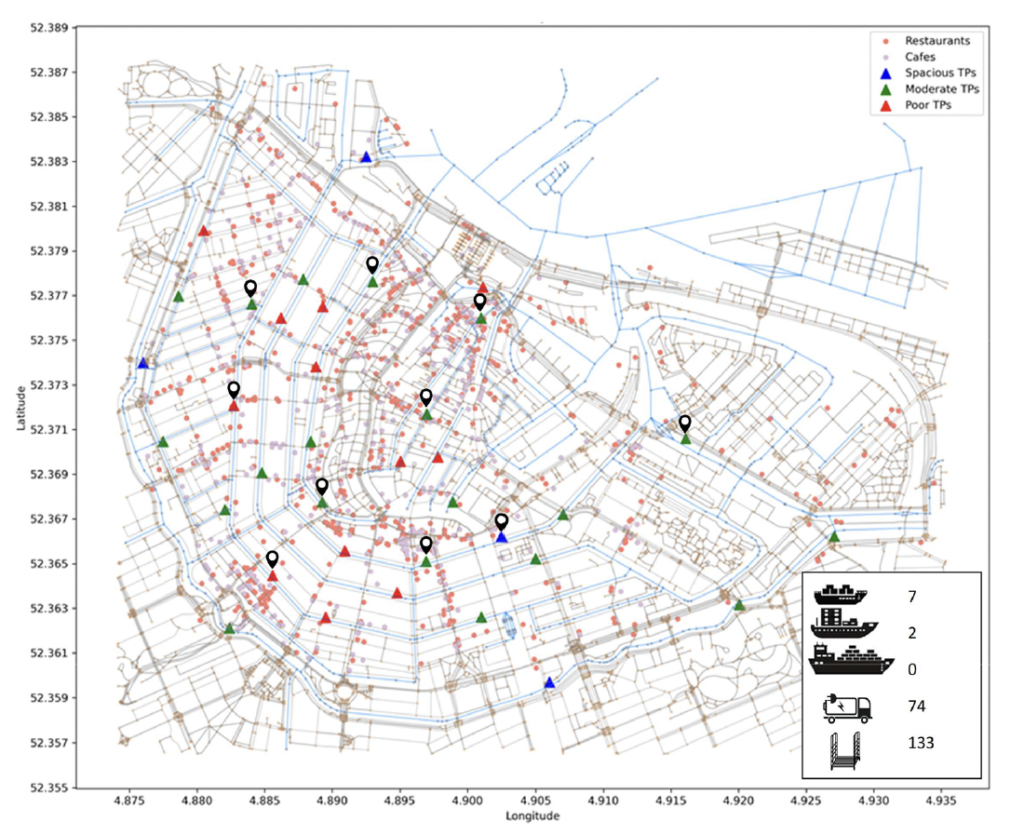A new paper addresses the escalating challenges in urban logistics by proposing an optimal distribution network that combines urban waterways with last-mile delivery, specifically designed for cities with extensive waterway systems. We use Amsterdam’s city center as a case study, driven by the pressures on quay walls, congestion, and emissions, which necessitates reevaluating its urban logistics framework. Amsterdam’s city center is a well-known hub, with many hotels, restaurants, and cafés tightly clustered together. More than 1.500 HoReCa spots exist in this area, requiring a vast distribution chain for their input food supplies.
The problem is formulated as a two-echelon location routing problem with time windows, and the researchers introduce a hybrid solution approach for effective resolution. The algorithm consistently outperforms existing methods, offering superior solution quality and demonstrating effectiveness across established and newly developed benchmark instances.
In the Amsterdam case study, the researchers assess the advantages of shifting from a roadway-centric to a waterway-based system, revealing significant cost savings (approximately 28%), reductions in vehicle weight (approximately 43%), and minimized travel distances (approximately 80%) within the city center.

Incorporating electric vehicles enhances environmental sustainability, resulting in a total daily emission reduction of 43.46 kg. The study highlights the untapped potential of inland waterways in mitigating urban logistics challenges. Inspired by Amsterdam’s experience, global cities can adopt innovative approaches for sustainable logistics, providing valuable insights for managers aiming to improve efficiency, reduce costs, and promote sustainable transportation practices.
The study’s findings have substantial implications for urban policy and transportation planning in Amsterdam and globally. Establishing a waterway-based distribution network, characterized by reduced travel distances and a fleet of smaller, distributed vehicles, offers a more flexible and adaptable delivery system. This approach is precious for city authorities and policymakers. Integrating urban waterways into the transportation network provides numerous benefits and helps preserve historical heritage, making it especially appealing to municipalities and society.
Also read: Using Amsterdam waterways for city logistics

I think using waterways could greatly benefit the environment.